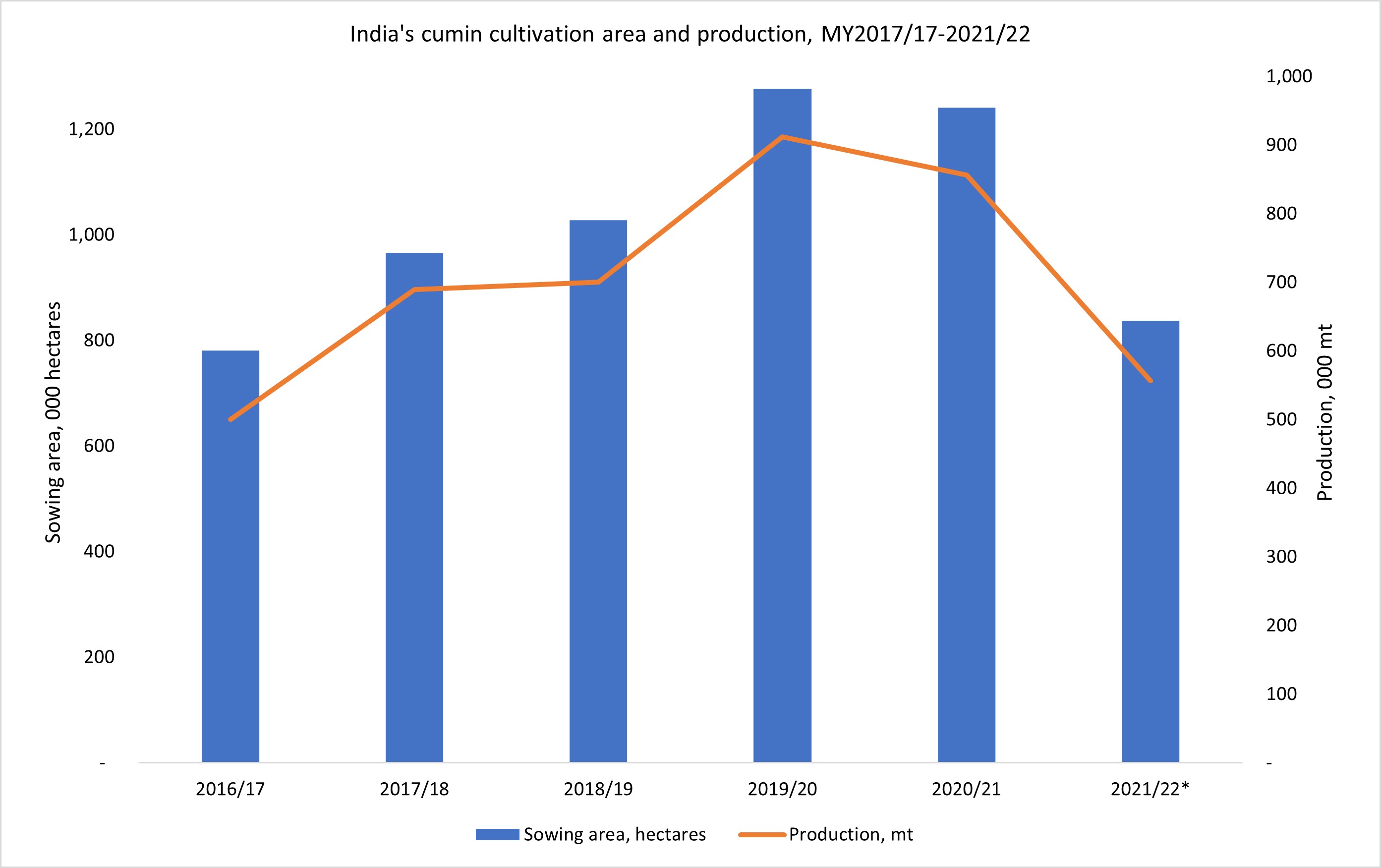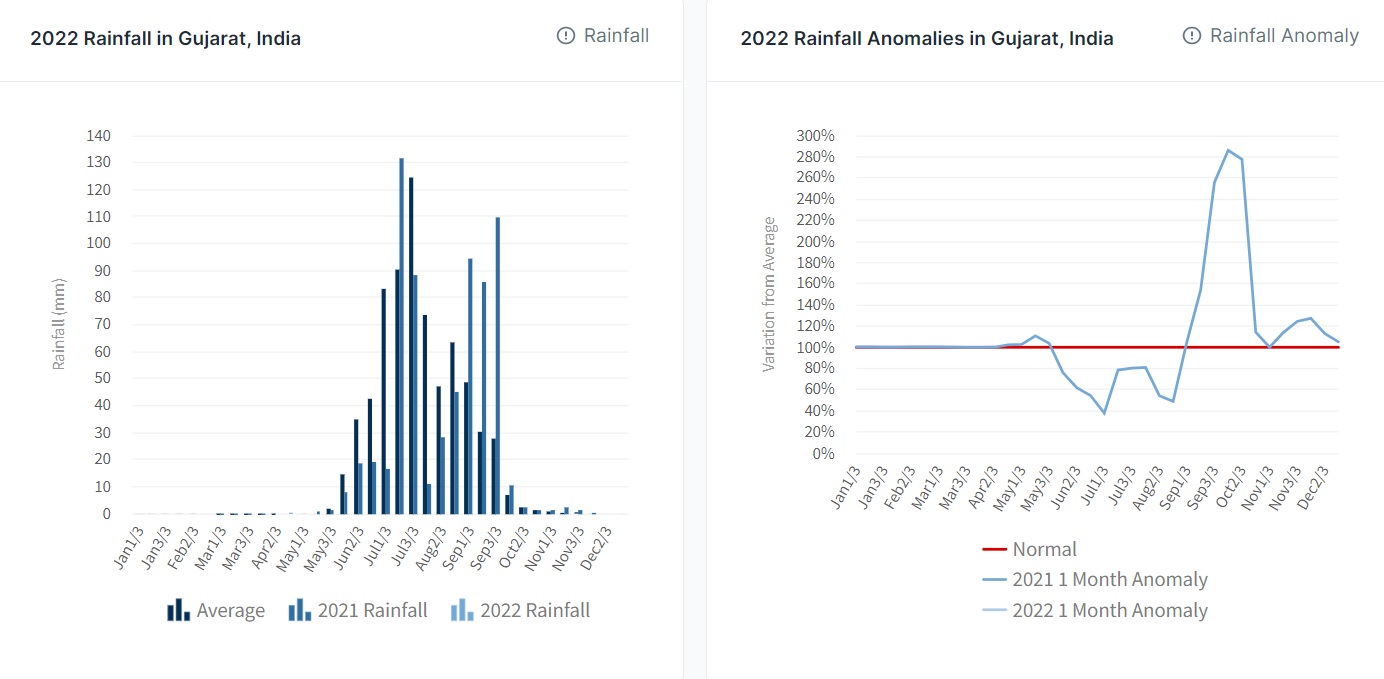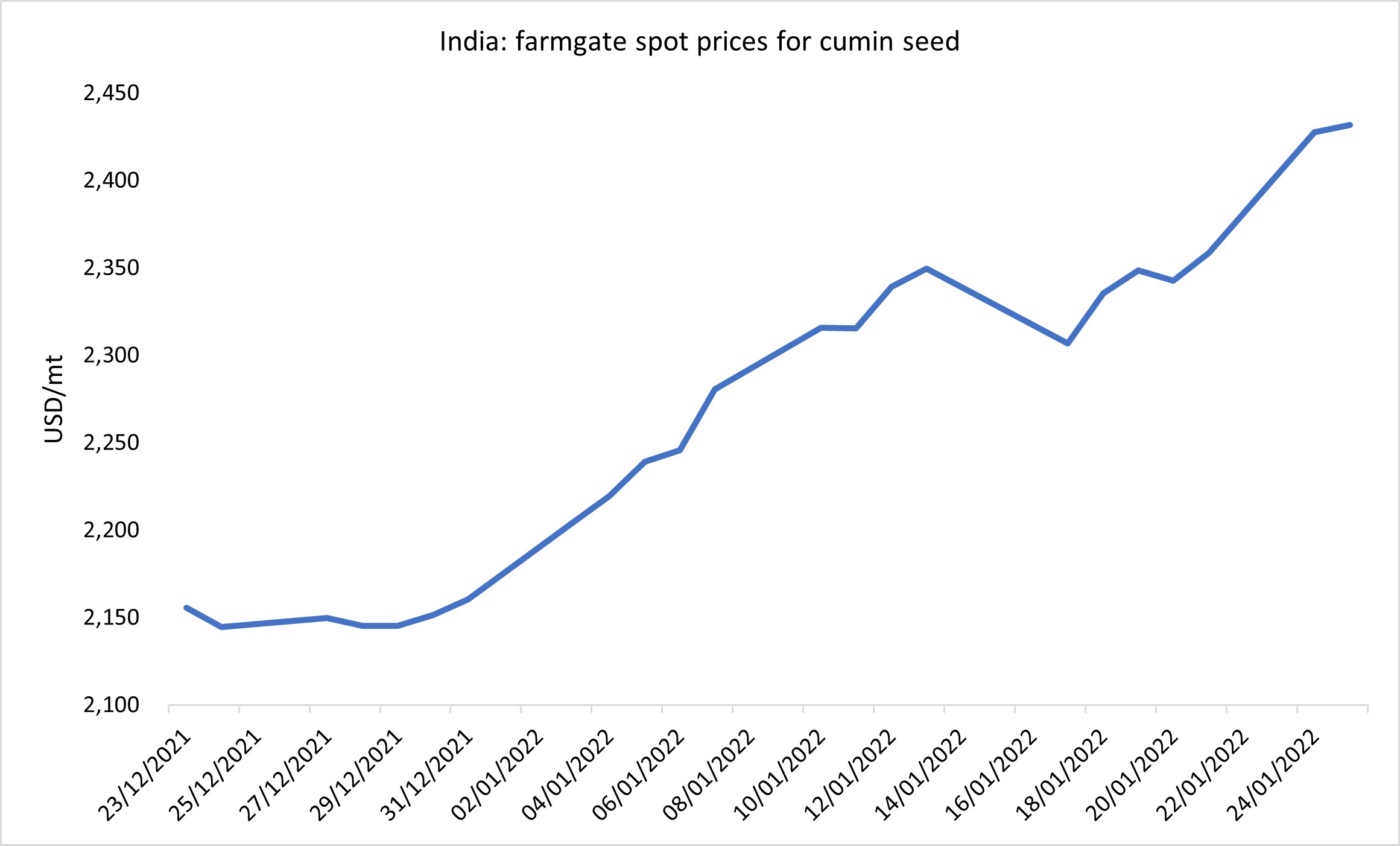India’s cumin exports down in 2021 amid lower production and higher domestic demand

India's cumin production in 2021 decreased for the first time since 2017. Indian Board of Spices shows that cumin output fell to 856,505 mt in 2021, 6.2% less than 2020. There are two main reasons behind the downward trend. First, in Gujarat and Rajasthan, central producing states, farmers have significantly reduced the jeera cultivation plantations in favor of more lucrative crops: mustard, chickpeas, or soybeans. The cumin sowing area totaled 1.24 million hectares, down 2.8% from 2020. The second factor is decreased yields amid high temperatures during the maturing crop stage in the abovementioned regions.

Source: Spices Board of India, Government of Rajasthan, Gujarat, trader estimates
The 2022 cumin crop, the harvesting of which is about to kick off in February, does not look promising either as farmers have continued cutting sowing areas under the crop. However, the reductions have been more significant this year than in the previous season. Gujarat jeera plantations in 2022 have fallen by 35% YoY to 307,000 hectares. The same situation is prevalent in the neighboring region. Rajasthan's cumin sowing area stood at almost 530,000 hectares as of December 28, 2021, down 31% YoY. The primary cause of such a situation remains the same. Farmers have ramped up the mustard area owing to soaring oilseed prices in the country. From January 2020 to December 2021, prices doubled USD530/mt to USD1,070/mt. The crop is less sensitive to weather changes than cumin, so smaller farmers find it less risky and more profitable.

Source:Spices Board of India
Another factor that adds pessimism to the current year's crop is weather anomalies in the main producing regions. While severe heat waves damaged the 2021 yield, this year's output has been affected by excessive rainfalls in November-December. Therefore, on top of the expected 30% decrease in production due to lower sowing area, market players add another 5% to the crop loss amid adverse climatic conditions.

Source: Tridge
India shipped 217,611 mt of cumin in the first eleven months of 2021, 8.5% less YoY. However, from January through August 2021, exports were still ahead of last year's figures. On top of the previous season's lower output, spice shipments were also substantially capped by lockdowns in some importing countries, a rise in domestic consumption, and temporary issues with the high pesticide level in the commodity. The latter caused China, the biggest buyer of Indian cumin, to stop imports from India in October-November 2021. China purchased 62,607 tonnes of jeera in the first eleven months of 2021, a 25% fall YoY.

Source:Indian Ministry of Industry and Commerce
The pesticide-level issue had been solved by the end of December 2021. China has agreed to resume cumin imports from India. The cargo would have a certificate from the Indian Board of Spices confirming the absence of chemicals in the spice. This news has helped support the demand on the export market at the beginning of January 2022. Another booster of foreign trade buying is low production in Syria and Turkey, the two largest jeera manufacturers. Although the statistics are not available for Syria, some market participants evaluate a fall in 2021 production by 25% YoY amid political instability in the region. Turkey's output reached only 8,386 mt last year, plummeting by 40% from 2020.
Cumin price soars in January 2022
Expectations about a fall in local production and solid domestic and export demand have created a powerful bullish sentiment in the market since December 2021. Spot farmgate cumin prices leaped to a three-year high of USD2,440/mt on January 25, 2022, up 12.8% from the previous month. Cumin futures with March 2022 delivery ended the day at USD2,560/mt, rising USD360/mt from a month ago. Some market players anticipate reaching a new price resistance level at USD2,680/mt (INR200,000/mt) this season amid a gloomy crop outlook. The latter will keep India's domestic stocks tight and help hold prices firm during the season, tightening the supply in the country.

Source:NCDEX
Sources:
Moneycontrol. Cumin, coriander prices to stay high.
The Times of India. Cumin acreage declines in state
Investing.com. Jeera Gains as There is a Possibility of Damage to the Crop due to Rain
SMC Global. Monthly Report On Spices
Indian Spices. Spices Board India


